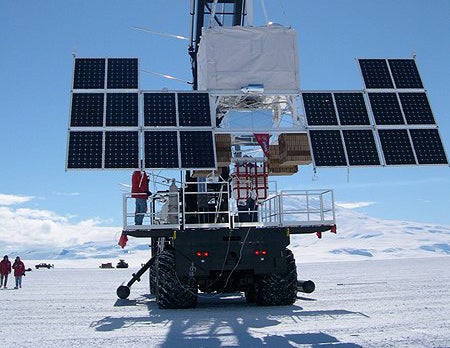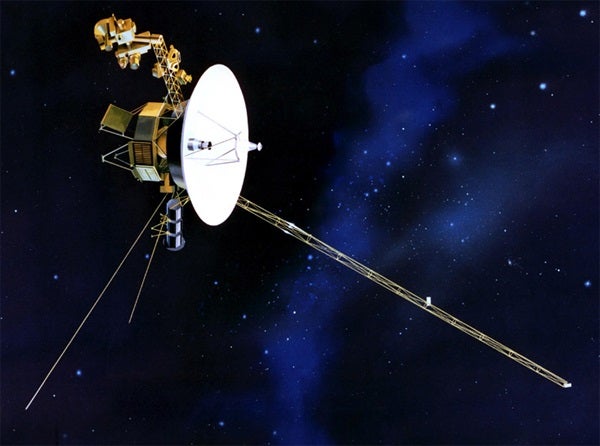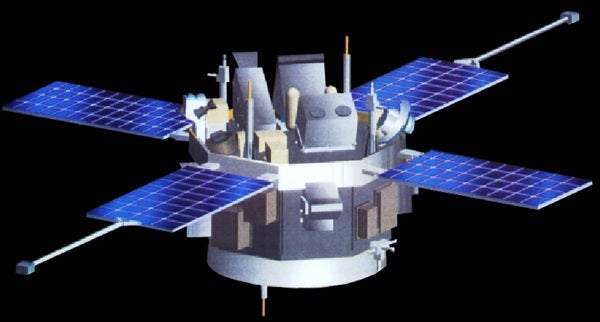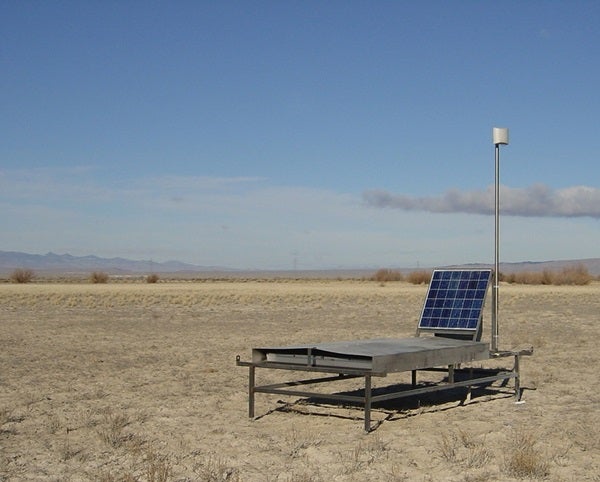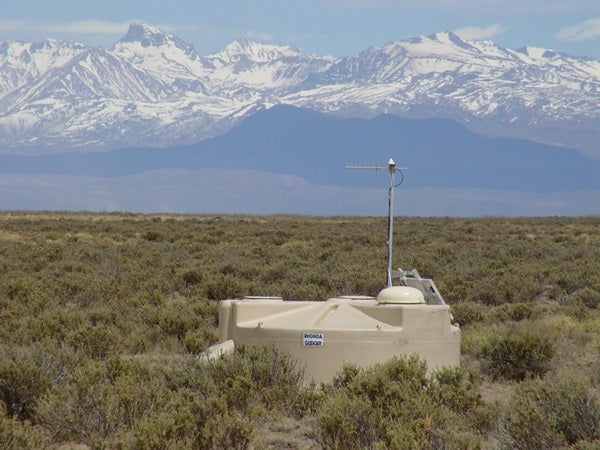Cosmic rays are particles that barrel through space at nearly the speed of light. Sometimes, they barrel right into orbiting observatories designed to study them. Other times, they smash into Earth’s atmosphere, creating cascades of lower-energy particles (air showers) that proceed to smash into scientists’ instruments. Space- and Earth-based observatories do the hard work of spying on these elusive rays, and physicists must decode their data. Here are six places where the major data miners are (or will soon be):
- This year, NASA will launch the International Space Station Cosmic-Ray Energetics and Mass investigation (ISS-CREAM, pronounced “ice cream”) to the ISS. The instrument has taken a few balloon-borne jaunts into space in preparation for its high-altitude assignment.
- The twin Voyager spacecraft, sent in a direction most accurately called “out of the solar system,” have been collecting cosmic-ray data for the past 37 years. As the faster of the two, Voyager 1 reached the edge of the Sun’s magnetic influence first. There, the amount of cosmic rays direct-mailed from our star drops off and the frequency of galactic and extragalactic rays trespassing the solar system ticks upward. The craft will continue to collect this high-energy data until long after you’re dead.
- The Advanced Composition Explorer (ACE) has been in orbit for 17 years, and it has enough fuel to sustain 10 more years of life. (That’s almost a 200-year life span in dog years.) One of its primary goals is to figure out which elements and isotopes make up cosmic rays from different parts of the universe.
- While the Alpha Magnetic Spectrometer (AMS) searches for antimatter and dark matter (no small task), it is simultaneously looking for cosmic rays of all sorts. Attached to the ISS, AMS keeps busy and gets deserved attention for its hunt for the most mysterious elements of the universe.
- The Telescope Array Project is the first cosmic-ray observatory on this list that keeps its feet on the ground. Its instruments are mostly interested in the biggest, baddest particles and have been catching their air showers in Utah since 2007.
- The Pierre Auger Observatory [link: http://www.auger.org/] in Argentina is not to be messed with: It has 1,600 tanks, each filled with 3,000 gallons of water, ready to take the names of air-shower particles that go for a swim. It also has optical detectors that home in on fluorescence in the atmosphere — ultraviolet light that shines when cosmic rays collide with the planet’s airy nitrogen molecules.


